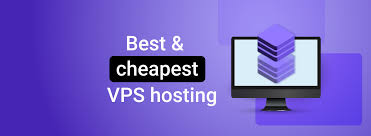Overview
In today’s competitive business world, companies need to make smarter decisions about their employees to stay ahead. HR Analytics is helping businesses do just that by providing insights based on employee data. Instead of guessing or relying on gut feelings, companies can use facts and figures to make better decisions about hiring, retaining, and managing their workforce. For HR professionals wanting to master these skills, taking an HR Analytics Course is a great way to get started.
What is HR Analytics?
HR analytics refers to the process of gathering and analyzing employee data to improve decision-making in human resources. This data could include things like employee performance, hiring trends, turnover rates, and engagement levels. By studying these patterns, HR teams can predict future trends, understand what’s working, and solve potential problems before they become bigger issues.
Key Benefits of HR Analytics
- Better Hiring and Retention
Hiring the right people is one of the biggest challenges for any company. HR analytics helps by identifying patterns in successful employees, which can then be used to improve hiring strategies. For example, if the data shows that certain traits or skills lead to higher success in a particular role, HR can look for those qualities when hiring. In addition, by analyzing turnover data, companies can pinpoint why employees leave and take steps to improve retention.
- Increased Employee Engagement
Keeping employees happy and engaged is key to a company’s success. With HR analytics, companies can track employee satisfaction through surveys, performance reviews, and feedback. By understanding what motivates employees and what causes dissatisfaction, companies can take targeted actions, such as improving work conditions or offering better career development opportunities. Engaged employees are more likely to stay with the company and be more productive.
- Smarter Workforce Planning
HR analytics helps companies plan for the future by using past data to predict future needs. For example, by analyzing hiring trends, productivity levels, and company growth, HR teams can predict when they will need more staff or what skills will be in demand. This ensures that companies always have the right people in the right positions, helping them avoid sudden talent shortages.
- Boost in Employee Productivity
Using HR analytics, companies can identify areas where employees may be underperforming and take steps to improve productivity. This could involve offering targeted training, adjusting roles to better suit employee strengths, or identifying inefficiencies in the workplace. When companies act on these insights, employees perform better, and overall productivity increases.
How to Get Started with HR Analytics?
To take full advantage of HR analytics, HR professionals need the right skills and tools. A great way to gain this expertise is by enrolling in an HR Analytics Certification Course. These courses teach professionals how to collect and analyze workforce data, interpret the results, and apply them to real-life HR challenges. With hands-on learning, HR professionals can become experts in making data-driven decisions.
| HR Analytics Benefit | Impact on Workforce |
| Better Hiring and Retention | Helps attract and keep the right talent |
| Increased Employee Engagement | Improves employee satisfaction and morale |
| Smarter Workforce Planning | Predicts future workforce needs |
| Boost in Employee Productivity | Optimizes employee roles and performance |
Example of HR Analytics in Action
Imagine a company struggling with high employee turnover. They use HR analytics to dive into the data and discover that younger employees are leaving because they don’t see clear career growth opportunities. Using this information, the company creates new mentorship programs and clearer career paths. As a result, turnover drops by 25%, and employee satisfaction goes up. This is a perfect example of how an HR Analytics Certification Course Online can equip HR teams with the tools to make real changes.
HR Analytics: Shaping the Future of HR
HR analytics is changing the way companies manage their employees. In the past, decisions were often based on gut feelings or limited information. Now, companies can rely on data to make smarter decisions about hiring, retaining, and managing employees. This data-driven approach leads to more efficient processes, happier employees, and a more successful business overall.
Sum Up
HR analytics is a powerful tool for companies looking to make smarter workforce decisions. Whether it’s improving hiring practices, increasing employee engagement, or boosting productivity, HR analytics provides insights that help companies stay competitive. By investing in tools and courses to learn HR analytics, HR professionals can bring real value to their organizations.
With the right data, companies can create a more engaged, productive, and successful workforce. It’s time to unlock the full potential of HR analytics and make better decisions for your employees and your business.




